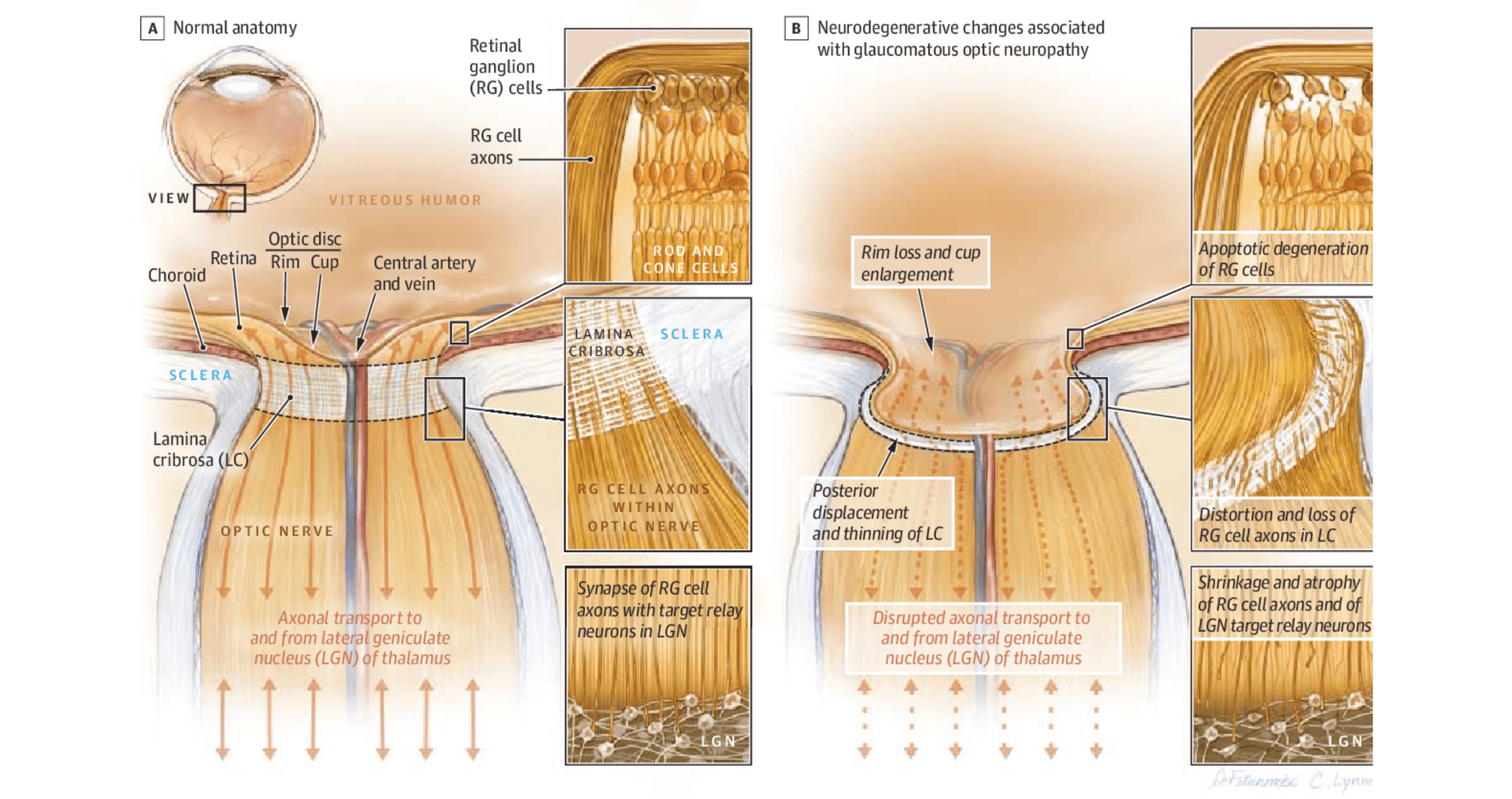Glaucoma is characterised by intra-ocular pressure (IOP) that is sufficiently high (Nb. in some people this may mean “normal pressure”) to cause damage to and the progressive death of retinal ganglion cells (RGCs). RCGs are the "output nerve cells of the eye". They carry the visual messages from the receptors for light in our retina (photoreceptors) to the visual centres in our brains (the Lateral Geniculate Nucleus), travelling via the optic nerve.

How Does Glaucoma Affect Visual Function?
A decrease in ganglion cells results in decreased visual function. Classically there is an incremental loss of peripheral then central visual field.
However, recent studies have shown that some central visual functions (e.g. contrast sensitivity – the ability to detect subtle differences in patterns and shades) are diminished as a result of ganglion cell injury/death, even prior to central field loss.
How Does The Optic Nerve (Ganglion Cell) Damage Occur?
Our knowledge of the specific mechanisms that result in IOP-related ganglion cell/optic nerve injury is incomplete. Evidence suggests that intra-ocular pressure may cause posterior displacement of the Lamina Cribosa (at the optic nerve head), resulting in mechanical damage to retinal ganglion cell axons, and also in the disruption of axonal transport from the visual centres in the brain (Lateral Geniculate Nucleus) to the eye. Both factors induce RCG death (apoptosis).
What Can We Do About Optic Nerve (Ganglion Cell) Damage?
Damage caused is irreversible and is more likely to progress if untreated. Early detection and treatment by lowering intra-ocular pressure can slow down progressive injury to the ganglion cells/optic nerve. Unfortunately, treatment cannot restore lost visual function.